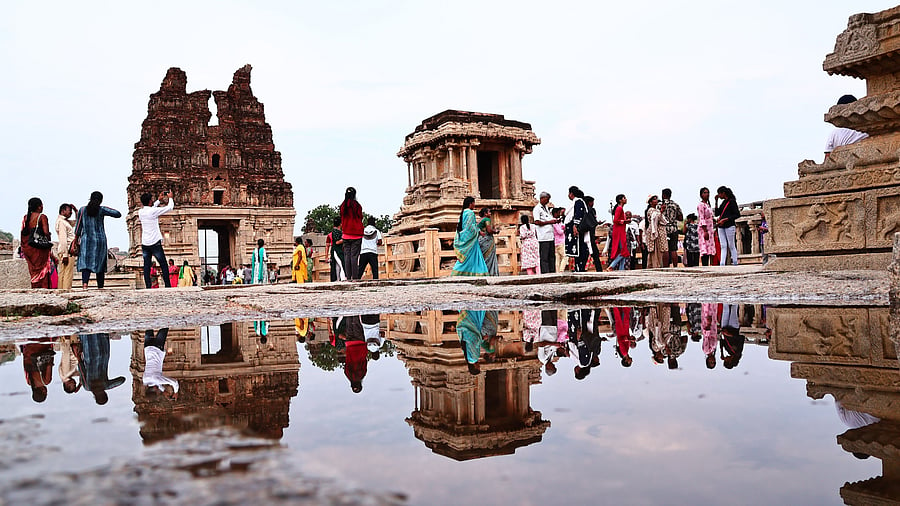
Hampi, a UNESCO World Heritage Site, is one of Karnataka's most beautiful destinations, and the monsoon season amplifies its charm.
Credit: DH Pool Photo
The ruins of Hampi have stood for centuries as a testimony to the grandeur of the Vijayanagar empire and are important enough to have been named a UNESCO World Heritage Site. But with the Archeological Survey of India (ASI), which is charged with its maintenance, apparently deprived of funds, the historic site finds itself in danger of further ruination, not caused by war and invasion this time but by apathy.
Located on the banks of the Tungabhadra, Hampi, which predates the Vijayanagar empire itself and finds a mention in the ancient Puranas and the Ramayana, boasts of over 1,600 surviving remains, including temples, forts, royal complexes, pillared halls, stables, water structures, gates and checkpoints.
Conquered by the Deccan Muslim Confederacy in 1565, the city was pillaged over a period of six months before being abandoned. While the 57 centrally managed monument sites urgently need Rs 25 crore to prevent further deterioration of the structures, the paucity of funds and irregular release of money to contractors have left conservation and restoration efforts, started a decade ago, incomplete. Over the last five years, the Centre has released an average of a meagre Rs 1.63 crore a year for core conservation work.
Locals have blamed the ASI for the collapse of a portion of Salu Mantapa near the famous Virupaksha Temple as the renovation work that was initiated in 2019 is yet to be completed. Similarly, renovation work which began at the Krishna Temple in 2014 remains incomplete.
Repair works on the Vijaya Vittala Temple complex, Achyutaraya Temple and Bazaar area have also been put on hold due to the uncertainty over the release of funds. Hampi is Karnataka’s second most-visited tourist destination after Mysuru, generating an average revenue of Rs 4.21 crore from just ticket sales.
Unfortunately, even the amount collected through ticket sales is not allotted for conservation work. In addition to the 57 groups of monuments under the control of the ASI, there are over a thousand non-notified structures which are maintained by the state’s Department of Archaeology, Museums and Heritage (DAMH).
These, too, are suffering for the same reason. Now, to add to Hampi’s woes, contractors have refused to take up fresh conservation and restoration work as they have not been paid their bills to the tune of Rs 7 crore for over a year.
Hampi is a classic case of monumental neglect by both the state and Union governments. They should immediately increase the funding for conservation and restoration, if need be with private participation and international collaborations.
In addition, the local community should be involved in all initiatives. It is not possible to restore the lost splendour of Hampi, but we should at least be able to preserve a reminder of its glorious past.
